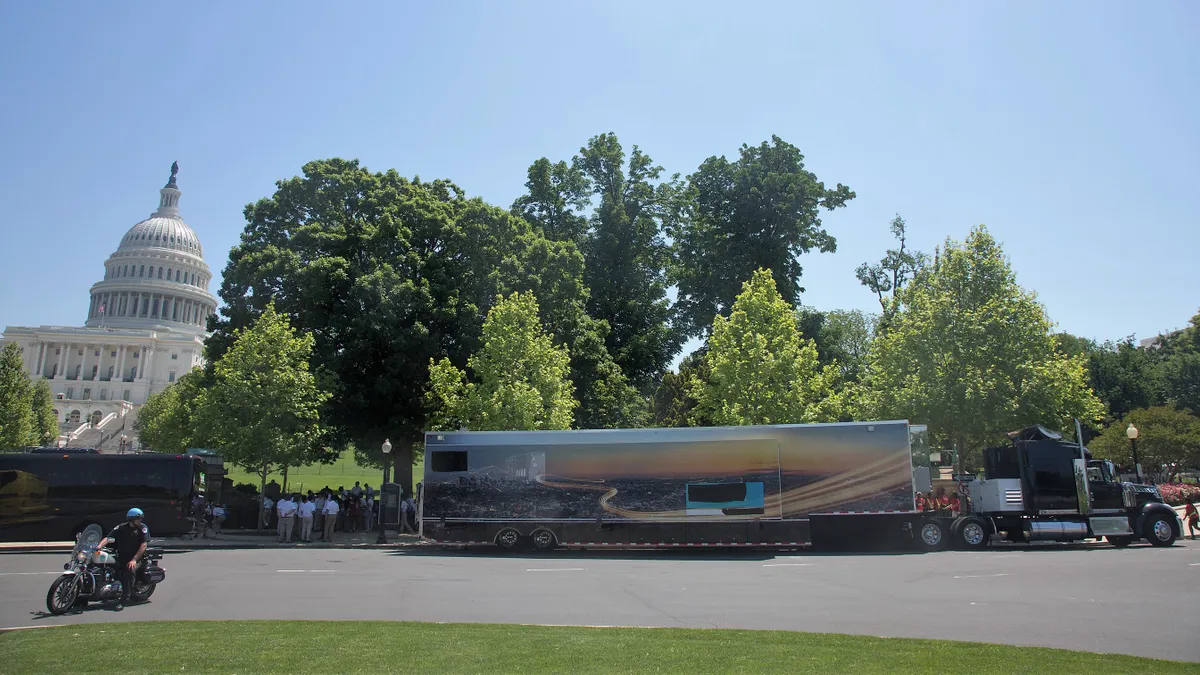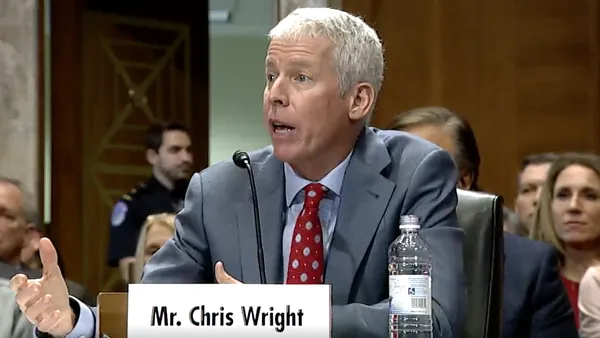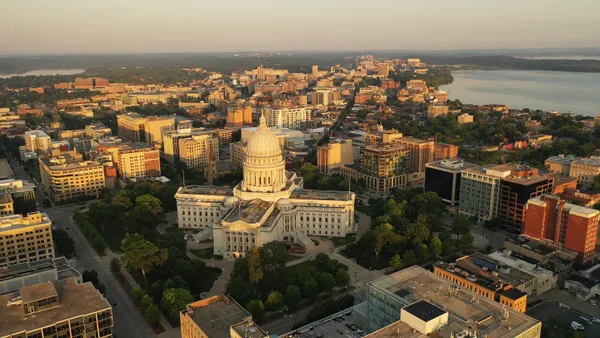Inside a semi-truck parked near the Capitol Building in Washington, D.C. on Wednesday, people were exploring an interactive exhibit to learn how energy is created and used across the country.
The exhibit, developed by Siemens, has traveled to 200 different locations and been seen by more than 3,000 people according to Kevin Yates, president of Siemens Energy Management division. The truck showcases how electricity is created and transmitted, and displays different tools consumers can use to manage their energy usage. iPads were also on hand for users to quickly pull up information on different elements of energy infrastructure.
Prior to the Capitol, the truck had been parked outside of schools, businesses, utilities and a host of other locations so different groups can visit.
"It's been a broad audience," Yates told Smart Cities Dive.
In the center of the truck, an interactive display focused on microgrids, which are local energy grids that can be disconnected from larger, traditional grids and operate autonomously. At the display, users can virtually place tiles for buildings, energy sources or electric vehicle charging stations; crank up solar or wind; and see in real-time if their microgrid creation has an energy surplus or deficit, including how much.
According to GTM research, there were 160 microgrids across the U.S. as of 2016 and 13 new microgrid projects were started last year. That same forecast anticipates a 30% increase in microgrid capacity by 2020. The University of California, San Diego has a microgrid that supplies 85% of campus electricity needs, 95% of its heating and 95% of its cooling. Fort Collins, CO also has a microgrid project for their zero energy district.
Alcatraz has one of the largest microgrids in the U.S., with a 305-kilowatt (kW) solar array on the roof of the prison. The project has reduced fuel consumption on the island by 45% since its was installed in 2012. Across the country, Pittsburgh is taking it up a notch and pursuing an unprecedented goal of a city powered by a series of microgrids.
"It’s an investment," Yates said. While microgrids typically save money in the long-term, installation is still expensive. And battery storage systems — a good microgrid partner that can improve reliability and increase the ability to rely on renewables — are still too costly for widespread use. Yates said that some of the places where microgrids will and are succeeding are locations with high energy costs and a political and social will to switch to renewables.
California, with a statewide goal to reach 50% renewables by 2030 and increase their energy storage to 1.3 gigawatts by 2020, is one place where more microgrids will likely spring up. But policymakers countrywide will need to be advised on why the cost of microgrids makes sense for their community, district, state or area.
"Technology and software are the solution to that," said Yates.
While microgrids typically relied on diesel generators or other fossil fuels, an increasing amount rely on renewable energy and battery storage. In those systems, control software can seamlessly switch from solar to traditional generation and often allow batteries sited at the facility to provide power services to the larger grid.
For a system like the one Pittsburgh has in mind, the individual microgrids could work together for higher energy efficiency and disconnect when there are power problems to protect their systems and keep energy flowing to unaffected parts of the city.
Microgrids could also end up powering much of the developing world. International Energy Agency estimates that more than two-thirds of rural dwellers who still lack electricity will need power from a distributed source — either microgrids or stand-alone power systems. Many just live in areas that where the grid is inaccessible.
One of the visitors at the exhibit was Gregg Harper, a Republican congressman from Mississippi who is on the House Committee on Energy and Commerce.
Harper said that microgrids are a great solution for rural Americans or communities that aren’t connected to the grid. He said at the end of the day, families just want to be able to hit the switch and have the lights come on.
“It’s a great idea,” Harper said. “It’s part of the technology coming forward."
Microgrids could take a starring role in the needed reboot of America’s utilities. In its annual report, the American Society of Civil Engineers (ASCE) gave the U.S. national power infrastructure a D+. The report points out that most electric transmission and distribution lines were constructed in the 1950s and 1960s and only have a 50-year life expectancy. Much of the grid is at full capacity and if nothing is done, more power disruptions are likely.
In the near future, microgrids could also utilize data analytics and connectivity with smart devices. Yates mentioned Siemens' operating system, Mindsphere, which Siemens and other developers will likely create apps for in the future to connect devices with the grid.
"There isn’t a fight anymore about carbon footprints," Yates said. "People want reliable power and renewable power."










